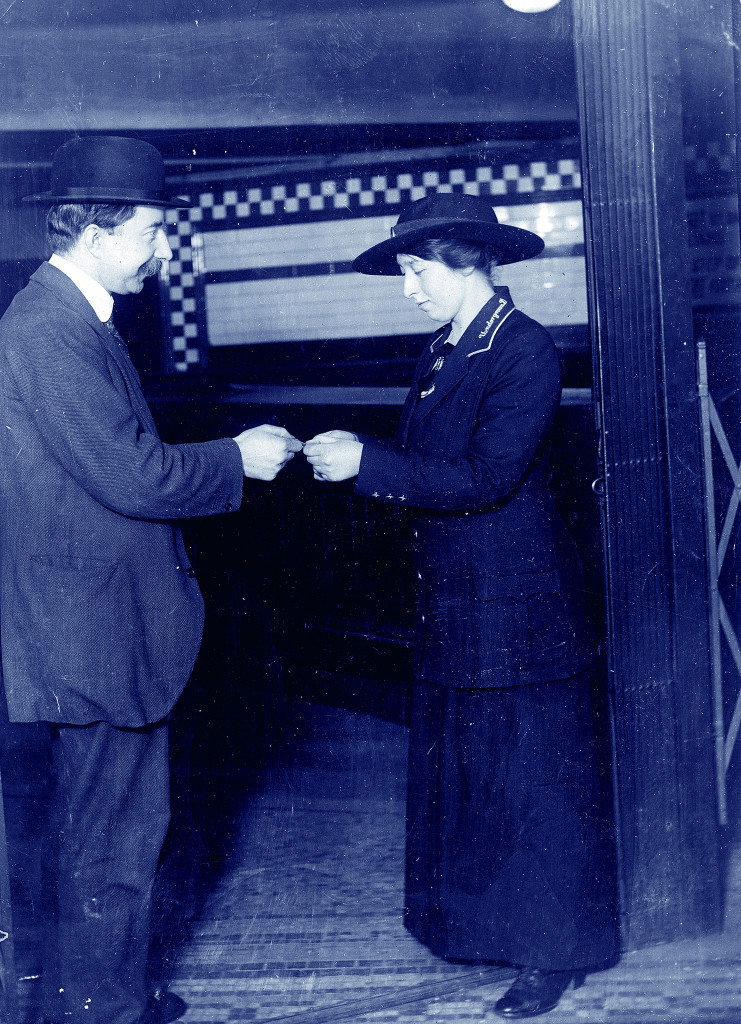The first tube station to be staffed entirely by women marks its 100th birthday tomorrow (Sat), and there will be events to mark the anniversary.
Maida Vale tube station opened its doors to the public on the 6 June 1915 as part of the Bakerloo line extension from Paddington to Queen’s Park.
Britain was in the middle of the First World War and many men were away on military service, including more than 17,000 Underground, bus and tram workers. With a shortage of staff to run the Tube, The Underground Electric Railways of London, the forerunner of London Underground, became one of the first transport providers in the country to allow women to work in operational roles.
If having women out of the kitchen wasn’t a big enough shock, they were also paid the same wages as the men.
The station manager was still a man – although he was actually based at another station.
To mark the centenary, a number of celebrations are being held at the station on Saturday 6 June, including an exhibition chronicling the history of women in transport, with staff volunteers on hand to speak with customers about the history of the station and the role of women in transport.
Maida Vale’s female workforce continued to work at the Tube station until 1919 when many servicemen returned to London. Two decades later, following the outbreak of the Second World War, a similar shortage of labour opened up jobs for women again and this time they took on virtually every role, including manual labour and heavy engineering.
TfL has joined forces with Crossrail, the Department for Transport, Network Rail, the Women’s Transportation Seminar and Women’s Engineering Society as well as others in the transport industry to celebrate 100 Years of Women in Transport.










Sorry to nitpick but I don’t think that first photo is really from 1915. 1965 maybe!
I’m in agreement that there is something odd about that photo being from 1915 – the building looks quite aged, there are signs advertising trips to “London Airport” and these trips seem to be 5s6d which at today’s prices would be £27.05 according to http://www.thisismoney.co.uk/money/bills/article-1633409/Historic-inflation-calculator-value-money-changed-1900.html
In 1965 that would be £4.76 which sounds more likely.
Belisha beacons were introduced in 1934. And the zebra crossings in the early 50s! And the street light looks too modern as well.
TFL is saying 1915 – https://www.flickr.com/photos/tflpress/18482196855/ – but that can’t be right.